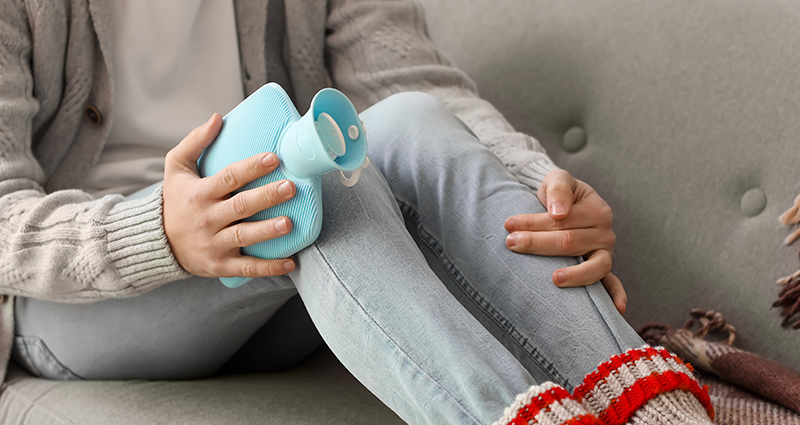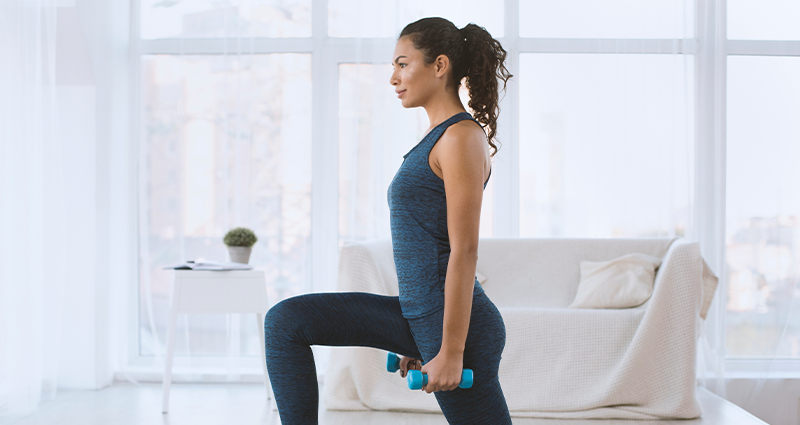Workouts are great but sometimes even a good session can leave you with lingering leg pain. It is a common issue that many people face after performing squats and lunges. Making “Why do my legs hurt so much after I do squats?” and “How to relieve the pain after squats?” frequently asked questions among fitness enthusiasts. The thigh pain after squats can be quite uncomfortable and limit your mobility, making it difficult to perform everyday tasks. However, the good news is that there are ways to reduce leg pain after squats and lunges.
So how to get rid of thigh pain after squats?
Here are some effective tips on how to reduce thigh pain after squats and get back to your routine quickly.

Stretching
If you experience thigh pain after squats, stretching can be a helpful way to alleviate the discomfort. Pain in the thighs after squats can be caused by muscle tightness, which can lead to soreness and stiffness.
Stretching helps in the relaxation of muscles and the improvement of blood flow to the afflicted areas, lowering the risk of muscular pain and stiffness. Stretching may be done both before and after an exercise, as well as during days off.
It’s important to warm up the muscles with some light exercise, such as cycling, jumping jacks, or running while stationary, before you begin stretching. Then, do some static stretches like the hamstring stretch, calf stretch, and quad stretch. Hold each stretch for at least 30 seconds before repeating with the other leg.
Massage
A massage is a great approach to getting rid of the way thighs hurt after squats and lunges. It facilitates the relaxation of muscles, the enhancement of blood flow, and the reduction of muscular pain and sore thighs after squats. Massage can be performed by a professional massage therapist or with the help of a massage ball or foam roller.
Foam rolling
Another excellent treatment for thigh pain after squats and lunges is foam rolling. It involves massaging and loosening the muscles using a foam roller, thereby relieving muscular pain and thigh cramps after squats. Foam rolling may be done before and after an exercise, as well as during rest days.
To address pain in your thighs after squats, you can try foam rolling your quadriceps and hamstrings. To foam roll the quadriceps, lie face down on the foam roller with your forearms supporting your torso. Apply mild pressure to the front of your thigh, from your hip to your knee, with the foam roller. Rep on the other leg.
To foam roll the hamstrings, sit on the foam roller with your legs extended in front of you.
Ice treatment
If you experience thigh pain after squats, ice treatment is another quick and easy approach to alleviate the discomfort. Pain in the thighs after squats can be caused by inflammation, and applying ice to the affected regions can reduce inflammation and numb the pain. Ice treatment can be used both immediately after a workout and on rest days to manage discomfort.
Heat treatment
Another helpful treatment for sore thighs after squats and lunges is heat therapy. It entails applying heat to the afflicted areas (ask yourself ‘where my thighs are paining after squats?’) in order to stimulate blood flow, relax muscles, and relieve pain. Heat treatment can be used on rest days, following the first 48 hours of exercise.

Take a rest
Rest and recovery are essential for dealing with pain in the thighs after squats and lunges. It’s critical to give your muscles time to recover and heal after an exercise. Overtraining can cause muscle strain and damage, resulting in long-term pain and suffering.
Depending on your fitness level and the intensity of your workouts, it is advised that you take at least one or two rest days every week. You can focus on mild stretching, foam rolling, and other recovery activities on rest days to help your muscles heal faster.
In addition to these methods, there are a few more things you should consider to avoid experiencing excessive pain after squats and lunges in future:
Warm-up before exercise
Warming up correctly is the first and foremost thing you should do before beginning any fitness regimen. Warming up increases blood flow to the muscles and prepares them for exercise. To get your heart rate up and your muscles free, try basic activities like jumping jacks, leg swings, or mild aerobics. A proper warm-up can help you avoid pain in your thighs after squats and make your muscles more flexible.
Gradual progression
If you’re a newbie or haven’t done squats or lunges in a while, start with modest weights. Lifting big weights during squats makes pain in the thighs inevitable, as it can quickly strain your muscles and joints, causing pain and discomfort. As you gain stronger and more comfortable with the workout, gradually increase the weight.
Proper form and technique
Leg pain after squats and lunges can be avoided with proper form and technique. Improper form can cause muscle strain and damage, resulting in long-term pain and suffering. Maintain a shoulder-width distance between your feet and point your toes slightly outward. Maintain an upright posture with your chest up, shoulders back, and core engaged. Keep your knees behind your toes and your weight on your heels when squatting. Maintain your front knee precisely over your ankle while lunging, and lower your rear knee to the ground. Remember this, so you don’t hurt your legs after squats next time.

Topical Pain Relief Remedies
One of the simplest ways to manage post-workout aches including thigh pain due to squats is to apply a topical pain ointment to the affected areas and relieve the leg pain after doing squats. These pain relief creams and sprays are sold over-the-counter so you won’t usually need a doctor’s prescription to pick up a tube and stop your legs and thighs from hurting after squats.
Omnigel: Effective Topical Pain Relief Remedy
Omnigel helps ease inflammation and washes away leg pain after squats/lunges. If you experience stiffness, restricted movement, or discomfort in the leg after exercising, just apply Omnigel to the muscle that is in pain after squats. Within minutes you should notice a perceptible easing of the thighs that were paining after squats, allowing you to get on with your day. Apply a couple of times a day if needed, as directed on the pack. This easy-to-use topical remedy will help you manage thigh muscle pain after squats so that you can stay on track with your fitness regimen.
Omnigel and Omnigel sprays are available across India at local pharmacies as well as online. Keep this topical pain relief remedy handy and use it not just for sports or thighs hurting after squats but for other joint and muscle pain too!

